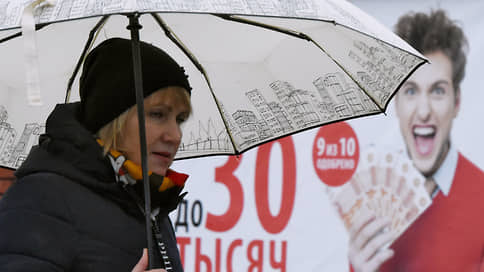The total cost of cash loans in Russia reached 31.4% per annum
[ad_1]

The total cost of loans (TCC) in the cash loan segment in the Russian Federation reached a multi-year high of 31.4% per annum. The result was even higher than in March 2022, when the key rate was at 20%. For banks, restrictions on PSK have been lifted until the middle of the year, and against the backdrop of high inflation, the cost of additional services is rising.
The total cost of loans in the cash loan segment by March 1 of this year amounted to 31.4% per annum, setting a long-term record. This follows from the data of the scoring bureau, which was reviewed by Kommersant. As a result, the figure exceeded the result of March 2022, when the PSC was 30.7% per annum and the key rate was 20% (currently 16%). Moreover, the current result is the maximum since the fourth quarter of 2014 (quarterly data available on the Bank of Russia website).
The full cost of the loan is disclosed by banks and microfinance organizations to inform borrowers about all the costs of obtaining and servicing borrowed funds. The indicator takes into account not only the interest rate on a loan or loan, but also associated costs, such as mandatory insurance, account maintenance fees or credit card issuance fees.
According to Scoring Bureau data, the PSC indicator for cash loans has been growing steadily since July 2023, when the Central Bank began raising the key rate. However, since December the key rate has remained unchanged (16%), while the PSC has increased by 1.5 percentage points. “The change in the average rate on newly issued loans is an inertial process. Decisions on loan applications could have been made by lenders even during the period of expected growth of the key rate, and consumers are only now receiving loans based on previously made decisions, which leads to an increase in the average value of the PSC,” explains Oleg Lagutkin, general director of Scoring Bureau.
The dynamics could be associated with the regulator’s abolition of the PSC limit for the segment, experts believe. In addition, in February, the growth of the TIC was caused by changes that came into force in January, according to which the calculation of the TIC now includes all payments by the borrower (including various subscriptions, alerts, telemedicine, etc.), which actually affect the terms of the loan , notes Banki.ru analyst Inna Soldatenkova.
At the same time, analysts say, individuals maintained high demand for credit funds. In particular, according to Frank RG data, loans worth RUB 495 billion were issued in February, which is 9% more than a year ago. High demand for loans continued “with a simultaneous tightening of macroprudential limits (MPL; the maximum share of loans in the portfolio depending on the debt load of the borrower.— “Kommersant”) from the first quarter of 2024,” notes Dmitry Gritskevich, manager for analysis of the banking and financial markets of PSB. The MPL for consumer loans with a debt burden indicator (DLI) of 50–80% for the first quarter of 2024 was reduced to 25% (in the fourth quarter of 2023 – 30%), with a DLI of more than 80% it remained at 5% (see. “Kommersant” dated November 27, 2023).
At the same time, according to the Central Bank, in the fourth quarter of 2023, the segment of borrowers with a personal income tax of more than 50% accounted for 45% of all cash loans issued. Banks are increasing “interest rates and insurance rates for such borrowers, thereby maintaining an acceptable level of profitability for themselves,” explains Yegor Lopatin, director of the group of financial institution ratings of the NKR agency.
Also, the tightening of the regulator’s risk policy “stimulates banks to increase the efficiency of using capital and limit the issuance of loans for large amounts, for which, as a rule, lower rates are offered,” notes Evgeny Blaginin, head of the Consumer Lending Department at VTB.
Continued high consumer demand will keep rates high over the next four to six months, Mr. Gritskevich is confident. Taking into account the extension of the lifting of the restriction on PSK until June 30, high values of the indicator can be expected at least until mid-summer, believes Yegor Lopatin. Due to rising inflation, Ms. Soldatenkova adds, the factor of increasing the cost of additional services cannot be ruled out.
[ad_2]
Source link





